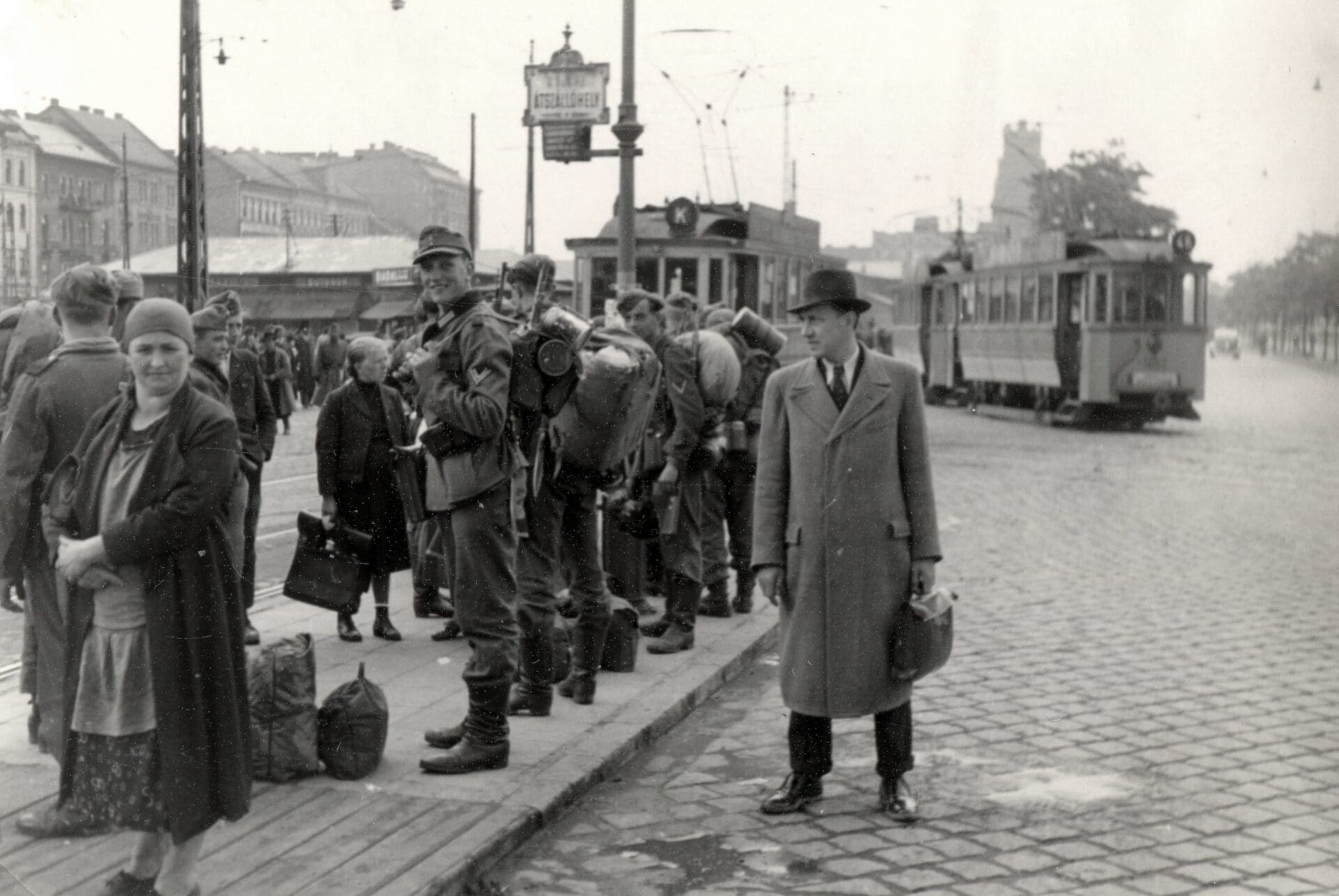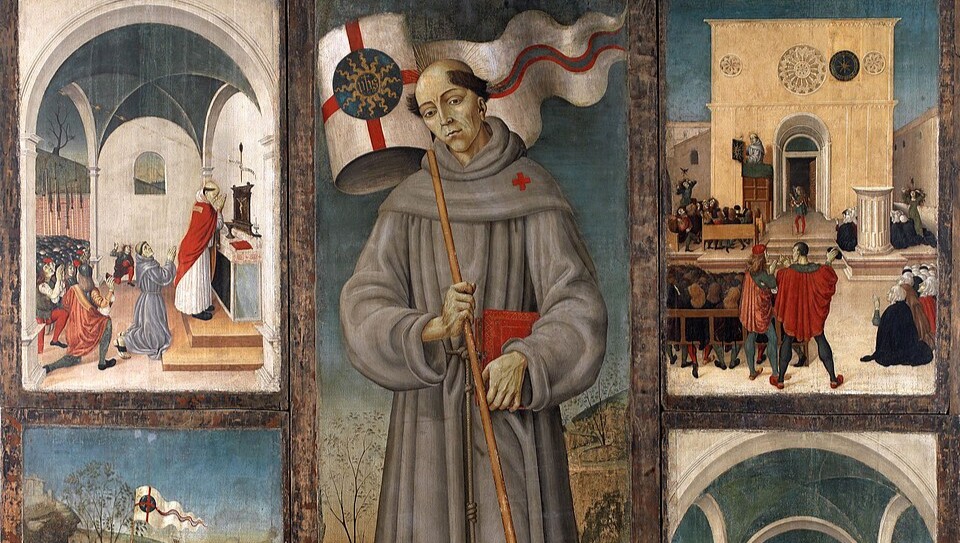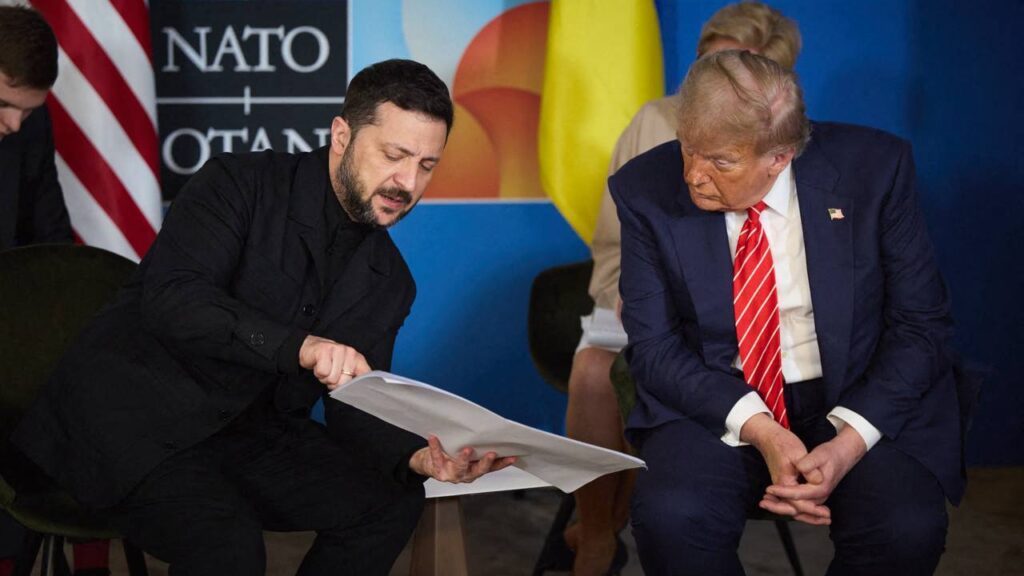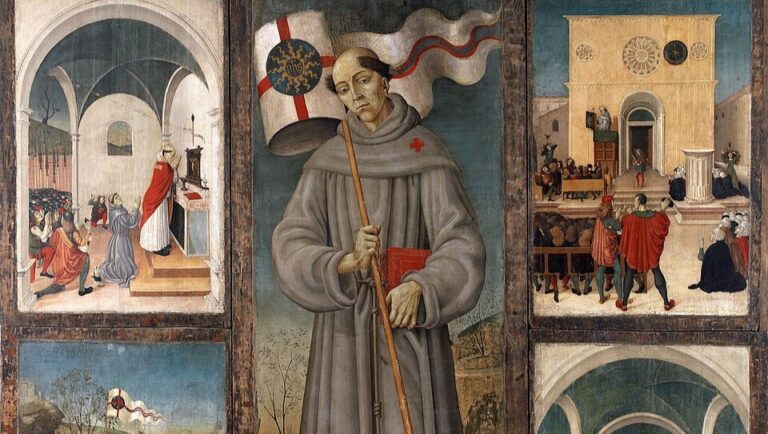In this article, we attempt to present the contradictory situation the Hungarian royal police found itself in after the German occupation of 1944. Both the urban police and the rural gendarmerie played an undisputable role in the Hungarian Holocaust, although the distribution of responsibilities rested with the local administration. According to interior ministry state secretary László Baky’s confidential decree of 7 April 1944, the designation of ghettos and the gathering of Jews were the responsibility of the police and the gendarmerie.[1] (Although they were not explicitly named in the final decree). The 12 April circular letter of the governor’s commissioner of the Transcarpathian Territory, the task of the police, the gendarmes, the mayors and teachers was to guard and seal Jewish property, to sell livestock owned by Jews, and to entrust the personal property left behind to caretakers.[2] The police also took part in the deportations: the instructions—for example, according to the minutes of the meeting held in Munkács in May about the course of the deportations—said gendarmes were to escort the Jews from the camps to the wagons, and police to stand guard at the crossroads. In addition, the police was not only tasked with collecting the weapons of the Jews, but were also to take action against Jews who sabotaged the wearing of the yellow star.[3]
The collaborating interior ministry had a good reason for using foreign gendarmes for the deportations, as some policemen, gendarmes and soldiers tried to intercede for their Jewish partners. A certain Budapest police constable named Jancsó for instance was reported for hiding his Jewish girlfriend.[4] For the same reason, proceedings were initiated against gendarmerie captains Endre Bodolay and Endre Nagy, while reserve lieutenant László Erney was interned and then sent to the front.[5] The fact that there were gendarmes living in relationships with Jewish women may seem surprising, even though policemen and gendarmes of Jewish descent remained in the country during the German occupation. The chief of police of Budapest’s 10th district, Ferenc Dárdai had police inspector György Déry interned because he was not wearing his yellow star.[6] 11th district police officer István Polák was taken to Jászberény for unarmed labour service, where he was beaten by gendarmes in mid-April.[7] In the Pécs gendarmerie, there were three other officers considered to be Jews who were retired in May.[8] A rare example of cooperation between Jewish resistance and police and gendarmerie was the case of Jewish police lieutenant Zoltán Rónai, who rescued Jews in Budapest. His assistants were retired gendarmerie captain István Parádi and police major Endre Forrás.[9] Zoltán Tarpataky, chief inspector of the 5th district police, helped Raoul Wallenberg, the legendary Swedish diplomat, with his rescue efforts.[10]
During the first weeks of the occupation, Hungarian police officers still interacted with Jews in public. According to a letter from a Budapest Arrow Cross (Hungarian Nazi) complainant in April, ‘they don’t just interact: they talk, negotiate, sit down at a table with each other’. Therefore, the police were soon forbidden to assist people wearing a yellow star in any way.[11] It was certainly a risky affair for policemen to help Jews. Some were never caught: Géza Duha, an employee of the Szilágysomlyó police, brought cigarettes, food and letters to the arrested Jews and left-wing activists.[12] During the era of the Arrow Cross rule, an unknown policeman warned a Budapest Jew to burn his fake documents, otherwise he would be court-martialed.[13] Budapest police sergeant György Bobály hid people who fled unarmed labour service after the Arrow Cross coup.[14] An escaped suspect was brought to police inspector Huba Kováts at the police headquarters in Budapest, who recalled the ‘interrogation’ as follows: ‘He conducted the interrogation in a benevolent manner, gave me bread and cigarettes, and said “I don’t care about your crime, because I know that you are innocent, like the others, and that everyone saves their lives the best way they can’.[15] Other police officers, such as István Birtha from Nyíregyháza or the police captain from Kisújszállás, warned the Jews before ghettoisation and deportation.[16] Szolnok police sergeant Dezső Molnár did the same, and he even let some Jews escape from the march towards the wagons.[17]
Many law enforcement officers were investigated and relieved from their positions. We know of several police officers who were replaced or subjected to investigation procedures several months after the occupation due to their anti-Nazi stance, and, in some cases, because of their perceived or genuine philo-Semitism. Such were the police officers Pál Krasznay in Nagyvárad, an unnamed officer in Ungvár, detectives Szokolai, Ladányi and police captain Pál Lukáts in Békéscsaba, police officer Andor Keresztes in Kecskemét, and police officer József Endrődy in Mosonmagyaróvár.[18] The police captain in Gyöngyös was transferred because the local Arrow Cross men deemed the conditions of the ghetto too good.[19] The same thing happened to the Jászberény police chief, János Vass.[20] In Cegléd, it happened that the Jews in the ghetto were insulted by Arrow Cross men, and therefore the local chief of police sent police officers in to protect them. His action did not go unpunished: in June, minister of the interior Andor Jaross transferred the mayor of Cegléd and the chief police advisor to Hódmezővásárhely and Gyöngyös.[21] Budapest police sergeant János Solymosi was detained for hiding Jewish property and two Jews.[22]
There were also policemen who physically protected Jews from atrocities. An unknown Budapest policeman attacked a drunken person insulting a Jewish woman at Csengery street: ‘A policeman came from Szondy Street and intervened in such a way that he punched the completely drunk person in the head from behind. After the second blow, the man fell to the ground, at which point the policeman kicked him several times with his boot, then pulled him up from the ground and punched him in the face about six more times, while the victim stammered and asked him not to hit him.’ The policeman’s identity was not revealed, but the Jewish woman he protected, did not escape either, as she was soon taken away for labour service duty.[23] Peculiar documentation has been preserved about a certain István Vig, a Budapest police officer. ‘A Christian woman’ reported that he ‘constantly delivered food to Jews and his wife also looked after them’ on József Boulevard. However, according to the police investigation, this ‘accusation’ was not true. The police had a visible tendency to ‘protect’ its employees from the ‘accusation’ of philo-Semitism, and so we cannot be certain whether Vig and his wife really belonged to the ranks of humane and brave people.[24]
We have to consider the case of police sergeant Géza Galántai, who had been awarded for his service many times, as a very special case. Disciplinary proceedings were initiated against him because on 27 November, at the corner of Kazinczy and Dob streets in Budapest, he protected an elderly Jewish woman whom he was accompanying when Jews were being moved together within the ghetto. A crowd wanted to rob the Jewish woman. collapsing from exhaustion, and when Galántai called on them to disperse, a Hungarian soldier tried to grab the policeman’s gun. In the ensuing brawl, Galántai shot the soldier, who died in the hospital. Interestingly, Budapest police chief Gyula Sédey praised the policeman for his ‘manly, determined, reliable’ act, which perfectly illustrates the chaotic public conditions of the era. Although the praise is surprising, it does not deviate from the rules of the new morality of the era. The part of the text in the police report about the incident the words ‘the Jewish woman’s property’ became ‘Jewish bounty’. A Jew could not own property—Jewish property had become state property.[25] By this time, however, a policeman had a hard time deciding what was expected of him: policeman József Győrfi was praised on 30 October because he shot dead Jewish fugitive Leó Goldstein,[26] and a month later, Galántai was praised for shooting a soldier who tried to harm a Jewish woman. In August, the Budapest police used weapons against a spontaneous demonstration of 1,100 Arrow Crosses, while only two months later they had to pledge allegiance to Arrow Cross dictator Ferenc Szálasi.[27]
The above described instances of police helping Jews took place primarily in Budapest after the Arrow Cross regime came to power. All of this is important because while willing participation in the deportations may have been encouraged by the degradation of respect for law and the prevailing chaos, it is definitely in favour of the Budapest police that, according to some historians, the number of rescue efforts by law enforcement officers in the capital city actually increased during the Szálasi era.[28] By this time, the police in Budapest and in the countryside alike were working under difficult conditions. The instructions of national police inspector Pál Hódosy, according to which Jewish corpses ‘must not be left on the street or stuffed in garbage cans, but must be removed,’ give an idea of what the conditions prevailing in Budapest in November, i.e. before the closure of the Soviet siege ring were like.[29] In December, the police in Kassa (Kosice) already complained that it was not possible to sleep in the service rooms because there were too many worms in the beds.[30] At the beginning of November, a reprimanding circular letter from the police headquarters was written under the title ‘Frequent cases of drunkenness of police officers on duty’. It says a lot that someone crossed out the words about ‘today’s extraordinary conditions’ and wrote an illegible word instead of it. The work conditions of the policemen during the occupation and widespread depression and alcoholism were apparently a taboo subject.[31]
In addition, respect for the law had been breaking down in every respect. In Budapest, on the evening of 27 October, deputy police officer József Királyfalvi stumbled upon rioting Hungarian soldiers, whom he could not discipline. The soldiers attacked him and encouraged each other to ‘shoot the policeman till he is dead!’ Királyfalvi eventually shot a soldier, who was hospitalised with serious injuries.[33] The underclass of Hungarian society, which tended to support the Arrow Crosses, often showed open contempt of the police. At the end of November, a Budapest police officer had a street fight with a factory worker on Kanizsai street, because he called him a ‘dirty peasant’ who he was ‘going to deal with’. As he said, ‘We now openly wear the swastika!’[34] According to recollections, the police ‘didn’t even dare to go near’ the Arrow Cross party headquarters.[35] Of course, there were also law enforcement officers who took advantage of their position to rob Jews, like the unidentified policemen who broke into Jewish apartments in Tüzér Street at dawn on 5 November .36] By this time, however, looting was no longer necessarily related to anti-Semitism, rather to a changed attitude towards private property. In December, Hungarian policemen confiscated money from Jews in an unnamed prison in Budapest, but the same policemen also robbed pigs from Christians in the area.[37]
With the German occupation and the ensuing Soviet siege of Budapest, law and order completely broke down, and chaos and the rule of death took over. Those policemen who were brave enough to continue performing their duty of protecting citizens, and refused to obey orders to harass Jews, should be remembered for their actions, and so should collaborators, if only as negative examples of moral failure.
[1] Ilona Benoschofsky, Elek Karsai (eds.), Vádirat a nácizmus ellen. Dokumentumok a magyarországi zsidóüldözés történetéhez, Budapest, Magyar Izraeliták Országos Képviselete, 1958-1967, vol. 1. 124.
[2] Kárpátaljai Területi Állami Levéltár, 53.3.7. 1.
[3] Judit Molnár (ed), Csendőrtiszt a Markóban. Ferenczy László csendőr alezredes a népbíróság előtt, Budapest, Scolar-ÁBSZTL, 2014, 277.; Budapesti Közlöny, 28 April 1944, 2-3.; Függetlenség, 6 April 1944, 7.
[4] Magyar Zsidó Levéltár (herein cited as MZSL), XX-Y. D5/6. 65.1095.19.
[5] Ítélet, 6 March , 16. (Bodolay); Csendőrtiszt a Markóban, 107. (Nagy) and 96. (Erney).
[6] Népbírósági közlöny, 5 July 1946, 6.
[7] Budapest Főváros Levéltára (herein cited as BFL), XXV.1.a.1945.5012. 16-17.
[8] BFL, XXV.1.a.1946.2218. 129.
[9] Új Élet, 6 Nov. 1946, 3. and 22 Jan. 1947, 12.
[10] Tamás Kovács, Embermentő közszolgák a holokauszt idején, Budapest, Nemzeti Közszolgálati Egyetem, 2014, 119.
[11] MZSL, XX-Y. D5/6. 65.1094.15. (Arrow Cross); Benoschofsky, Karsai, Vádirat, Vol. 1. 165.
[12] Serviciul Judeţeanal Arhivelor Naţionale, Fondul Tribunalul Poporului din Cluj, Dos. 350/1945. 114.
[13] DEGOB, 36. (http://www.degob.hu)
[14] Kovács, Embermentő közszolgák, 124.
[15] Kovács, Embermentő közszolgák, 122.
[16] Randolph L. Braham (ed), A magyar holokauszt földrajzi enciklopédiája, Budapest, Park, 2007, vol. 2. 972 (Birtha); László Csősz, Konfliktusok és kölcsönhatások: zsidók Jász-Nagykun-Szolnok megye történelmében, Szolnok, MNL Jász-Nagykun-Szolnok Megyei Levéltára, 2014, 192.
[17] Yad Vashem Archives, O.33/6781. 1-3.
[18] Molnár, Csendőrtiszt a Markóban, 289. (Krasznay), 311. (Szokolai and Ladányi); Kovács, Embermentő közszolgák, 118. (Lukáts), and Politisches Archiv des Auswärtigen Amtes (herein cited as PAAA), R100.892 2282. 17 May 1944. (Keresztes); PAAA, R100.893 2285. 7 July 1944 (Endrődy).
[19] ’Földrajzi enciklopédia’, vol. 1. 551.
[20] ’Földrajzi enciklopédia’, vol. 1. 571.
[21] István Végső, ’Ceglédi zsidók sorsa a vészkorszakban’, in Judit Molnár (ed), A holokauszt Magyarországon európai perspektívában, Budapest, Balassi, 2005, 493-494.
[22] BFL, VI.13.b. 155. box. 1776/F.1944.
[23] BFL, VI.13.b. 155. box. 1626/F.1944.
[24] BFL, VI.13.b. 155. box. 1588/F.1944.
[25] BFL, VI.13.b. 155. box. 1761/F.1944.
[26] BFL, VI.13.b. 155. box. 1620/F.1944.
[27] BFL, VI.13.b. 155. kisdoboz. 1212/F.1944.
[28] László Karsai, Holokauszt, Budapest, Pannonica, 2001, 251.
[29] József Szekeres, A pesti gettók 1945 januári megmentése. „A magyar Schindler” – Szalai Pál visszaemlékezései és más dokumentumok alapján, Budapest, BFL, 1997, 32.
[30] Štátny archív v Košiciach, MKPKK. 13. box. 359/1944.
[31] BFL, VI.13.b. 155. box. 1635/F.1944.
[32] Szekeres, ’A pesti gettók, 32.
[33] BFL, VI.13.b. 155. box. 1609/F.1944. 1944.
[34] BFL, VI.13.b. 155. box. 1811/F.1944. 1944.
[35] Szekeres, A pesti gettók, 233.
[36] BFL, VI.13.b. 155. box. 1640/F.1944. 1944.
[37] BFL, VI.13.b. 155. box. 1579/F.1944. 1944.








